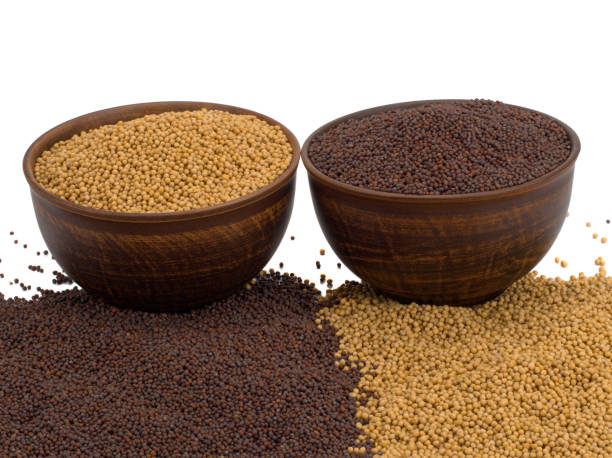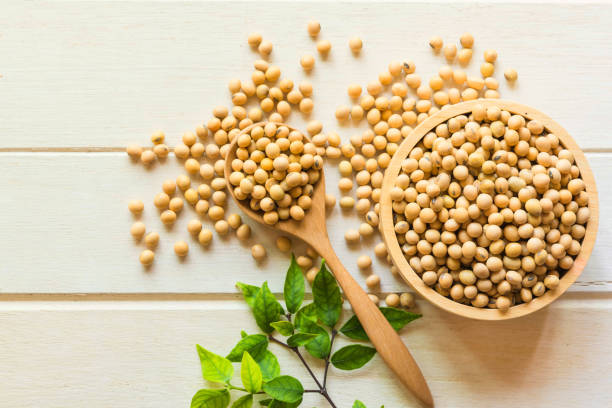Agriculture & Food Products
Agriculture and food products encompass a broad spectrum of goods derived from farming practices, including fruits, vegetables, grains, dairy, meat, and more. This sector involves cultivation, harvesting, and processing to meet global food demands, emphasizing sustainability and innovation in farming techniques. The diverse array of food products caters to nutritional needs, culinary preferences, and cultural diversity, playing a pivotal role in the global economy while facing challenges related to food security, environmental impact, and supply chain resilience.
Basmati Rice
“Basmati” is long grain aromatic rice grown for many centuries in a specific geographical area, in the Himalayan foothills of the Indian sub-continent, blessed with characteristics of extra-long slender grains that elongate at least twice their original size with a characteristics soft and fluffy texture upon cooking, delicious taste, superior aroma and distinct flavor, Basmati rice is unique among other aromatic long-grain rice varieties.
Agro-climatic conditions of the specific geographical area, as well as the method of harvesting, processing and aging, attribute these characteristic features to Basmati rice. Owing to its unique characteristics the “scented Pearl” lends a touch of class that can transform even the most ordinary meal into a gourmet’s delight.

Pulses
Pulses are one of the important food crops globally due to their higher protein content. Pulses are an important group of crops in India, which is also responsible for yielding large financial gains by amounting to a large part of the exports. India is the largest producer of pulses in the world.
Varieties Cultivated: Major pulses grown in India include chickpeas (gram), pigeon pea (tur or arhar), moong beans, urad (black matpe), masur (lentil), peas, and various types of beans.
Benefits/Uses of Pulses:
- Pulses are the major sources of protein in the diet. Of all categories of people, pulses form an integral part of the Indian diet, providing much-needed protein to the carbohydrate-rich diet.
- Pulses are 20 to 25 percent protein by weight which is double the protein content of wheat and three times that of rice.

Millets
Indian millets are a group of nutritiously rich, drought tolerant and mostly grown in the arid and semi-arid regions of India. They are small-seeded grasses belonging to the botanical family Poaceae. They constitute an important source of food and fodder for millions of resource-poor farmers and play a vital role in ecological and economic security of India. These millets are also known as "coarse cereals" or "cereals of the poor". Indian Millets are nutritionally superior to wheat and rice as they are rich in protein, vitamins and minerals. They are also gluten-free and have a low glycemic index, making them ideal for people with celiac disease or diabetes.
Benefits/Uses of Millets:
- Millets are highly adaptive to a wide range of ecological conditions and thrive well in rain-fed; arid climate and they have minimal requirement of water, fertilizers, and pesticides.
- Health-promoting nutritious crop: Compared to other cereals they have superior micronutrient profile and bioactive flavonoids.
- Millets have a low Glycaemic Index (GI) and also associatied with the prevention of diabetes.
- They are good source of minerals like iron, zinc, and calcium.
- Millets are gluten-free and can be consumed by celiac disease patients.
- Millet has a beneficial effect on the management and prevention of hyperlipidemia and risk of CVD.
- Millets are found to be helpful with the reduction of weight, BMI, and high blood pressure.
- In India, Millet is generally consumed with legumes, which creates mutual supplementation of protein, increases the amino acid content, and enhances the overall digestibility of protein.
- Millet based value-added products in ready to cook, ready to eat category are easily accessible and convenient to the urban population.
- Millets are used for dual purposes as food as well as fodder, which make it more farming efficient.
- Millet cultivation helps to reduce the carbon footprint.
The Indian government had suggested to the united nation for declaring the year 2023 as the International Year of Millets (IYOM). India got the support of 72 other countries, on 5th March 2021, United Nations General Assembly (UNGA) declared 2023 as the International Year of Millets.
The initiative of the Indian government is of celebrating IYOM 2023, it is done by making the population aware of the millet benefits and increasing the acceptability of the value added of millet across the country and world.

Rapeseed Meal
Rapeseed meal is a by-product of the oil extraction process from rapeseeds, which are also known as canola. The primary use of rapeseed meal is in animal feed, serving as a protein-rich ingredient in livestock and poultry diets. It is commonly used for feeding cattle, poultry, pigs, and other livestock. Rapeseed meal typically contains around 36-40% protein, making it a valuable source of protein for animals. The meal is traded internationally to meet the demand for high-protein animal feed.
Rapeseed is also cultivated for its oil, which is widely used for cooking and industrial purposes. Canola is a specific type of rapeseed that has been bred to have lower levels of erucic acid and glucosinolates, making it suitable for human consumption.

Soyabean Meal
Soyabean meal is a protein-rich byproduct of soybean processing. Widely used in animal feed, it provides essential nutrients for livestock. The meal's high protein content makes it a valuable component in the feed industry.
Benefits/Uses of Soybean Meal:
- Soybean meal is the most important protein source used to feed farm animals. It represents two-thirds of the total world output of protein feedstuffs, including all other major oil meals and fish meal.
- Soy is a high-quality protein. It is one of the few known plant foods to contain all the essential amino acids, like those found in meat.
- The soybean is high in fibre and protein with low saturated fats and free from cholesterol and lactose.
- It is a good source of omega-3 fatty acids and a source of antioxidants. They are also high in phytoestrogens.

Cotton Seed Meal
Cotton seed meal is a byproduct of cottonseed oil extraction. Used as a protein-rich supplement in animal feed, it contributes to livestock nutrition. The meal is valued for its protein content and digestibility.
Benefits/Uses of Cottonseed Meal:
- Cottonseed meal is a valuable source of protein for livestock, including cattle, sheep, and goats. It contains around 40% protein and is often used as a supplement in animal diets.
- Cottonseed meal is used as an organic fertilizer in agriculture. It provides a slow-release source of nitrogen, phosphorus, and potassium, as well as other micronutrients. It helps improve soil structure and fertility.
- Due to its organic matter content, cottonseed meal is used to improve soil structure, water retention, and microbial activity. It helps create a healthier and more fertile soil environment.
- It is used as a sustainable source for the production of certain biopolymers.
- Cottonseed meal has been employed in wastewater treatment processes as a source of nutrients for microbial activity that helps break down organic pollutants.

Mustard Oil
Mustard oil is a cooking oil extracted from mustard seeds. Widely used in culinary applications, it adds a distinct flavor to various dishes. Mustard oil is also valued for its potential health and various other benefits.
Benefits/Uses of Mustard Oil:
- Mustard seeds are crushed to extract mustard oil, which is used both for culinary purposes and in various industrial applications. Mustard oil has a distinctive flavor and is a common cooking oil in some regions.
- Mustard oil and mustard seeds have been used in traditional medicine for their potential health benefits. Mustard plasters, made by mixing powdered mustard with flour and water, have been historically used for their warming properties and as a remedy for respiratory issues.
- Mustard seeds have been traditionally used in the textile industry for dyeing fabrics. The seeds contain natural pigments that can impart yellow and brown hues to textiles.
- Mustard oil has been explored as a potential feedstock for biodiesel production. The oil can be processed to obtain biodiesel, providing an alternative and renewable source of energy.

Guar Gum Powder
Guar Gum is a natural thickening and binding agent derived from guar beans (Cyamopsis tetragonoloba), which are primarily grown in India and Pakistan. Guar gum powder is widely used in various industries due to its unique properties.
Benefits/Uses of Guar Gum Powder:
- Guar gum is used in hydraulic fracturing (fracking) as a thickening agent in the drilling fluid. It helps carry proppant materials and maintain viscosity in the fluid, facilitating the fracturing process.
- Guar gum is used as a binder and disintegrant in pharmaceutical tablets. It helps hold the tablet ingredients together and aids in their disintegration when ingested.
- Guar gum is often used as a thickening agent in various food products, including sauces, dressings, gravies, and soups. It enhances the viscosity and texture of these products.
- Guar gum acts as a stabilizer and emulsifier in food processing, helping to maintain the uniformity of mixtures and prevent separation of ingredients.
- Guar gum is used in the mining industry as a flocculant in ore flotation processes. It aids in the separation of valuable minerals from gangue.

Dehydrated Onion Flakes
Dehydrated onion flakes are dried onion pieces used as a convenient alternative to fresh onions. They are versatile ingredients in various culinary dishes, providing flavor and aroma.

Onion
Onion is a versatile vegetable used in various culinary dishes worldwide. Known for its distinct flavor, onions are integral to cooking and can be enjoyed raw, cooked, or as an essential ingredient in many recipes.

Corn
Corn, also known as maize, is a widely cultivated cereal grain. It serves as a staple food in many cultures and is used in various forms, including fresh corn, cornmeal, and corn-based products. Corn is valued for its versatility and nutritional content.

Sugar
Sugar is a sweet crystalline substance extracted from various plants, commonly sugarcane and sugar beets. It is a widely used sweetener in food and beverages, contributing sweetness to a variety of culinary products.

Wheat
Wheat cultivation in India has traditionally been dominated by the northern region of India. It belongs to the grass family and is one of the most widely cultivated and consumed crops globally. Wheat is a significant source of carbohydrates, protein, and various nutrients.
India is a significant exporter of wheat, and the country has been exporting wheat to various international markets. The level of wheat exports from India can vary based on factors such as domestic production, government policies, global demand, and international prices.

